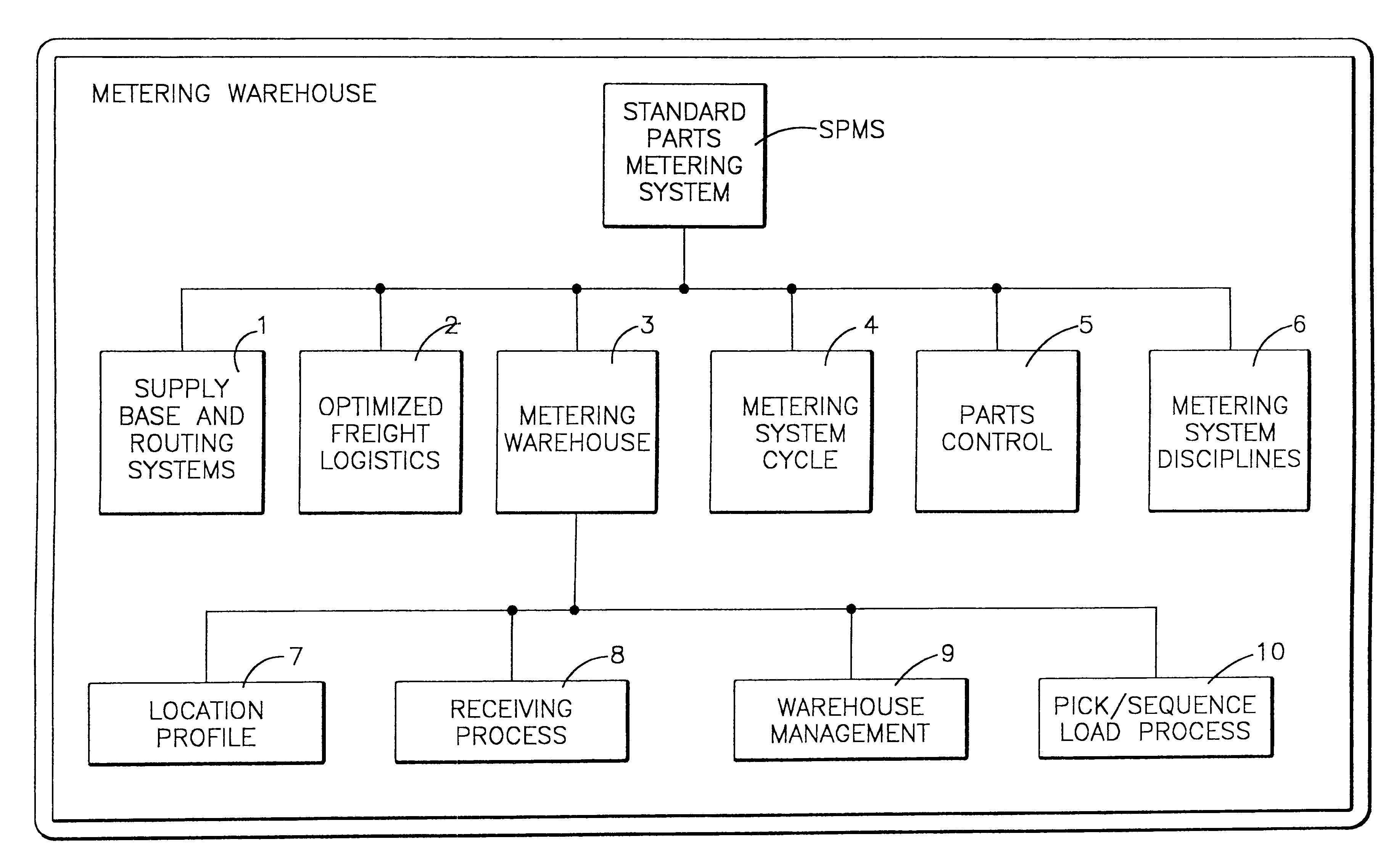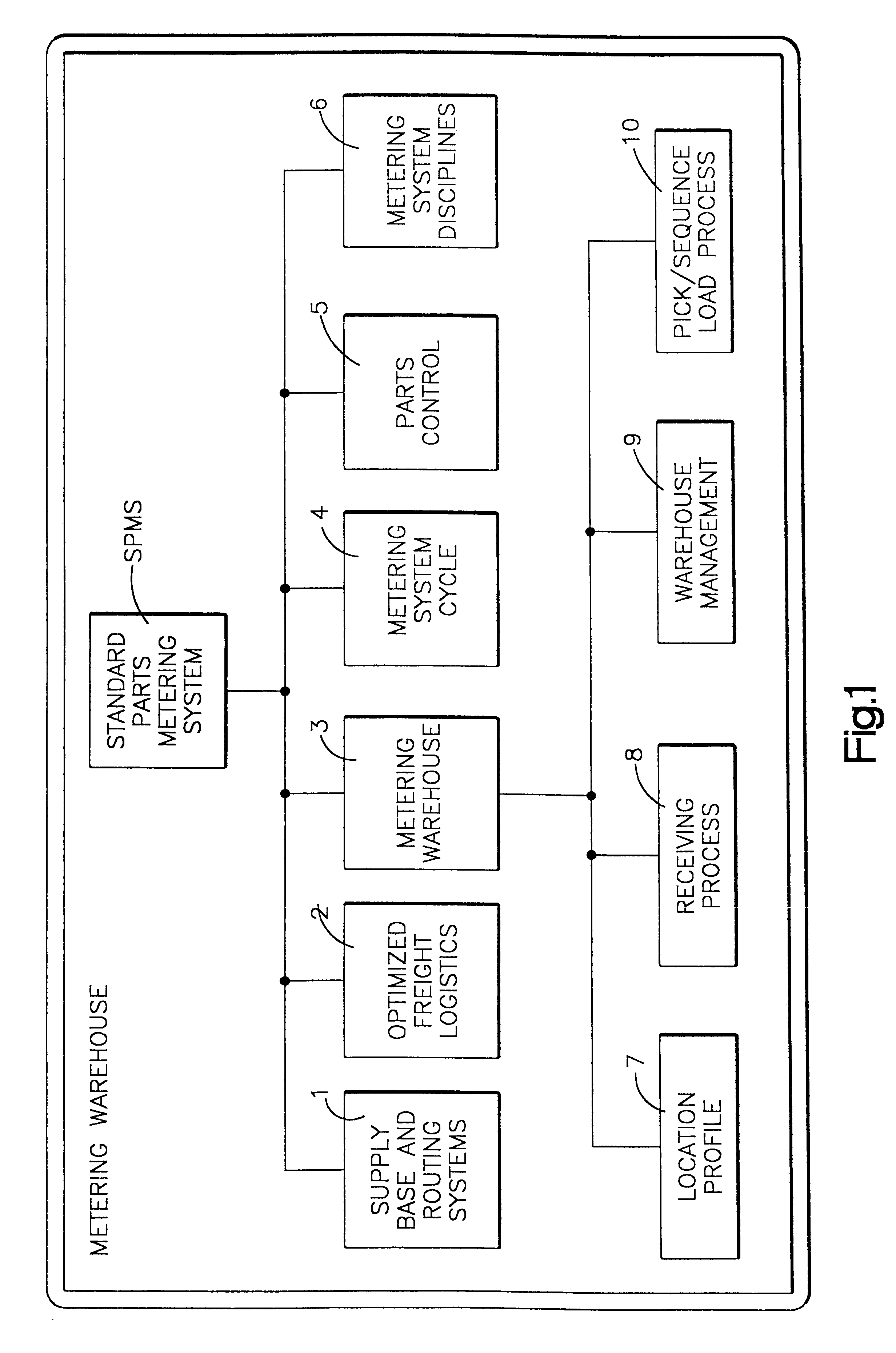Standard parts metering system
a technology of standard parts and metering system, which is applied in the field of standard parts metering system, can solve the problems of large assembly line cost of thousands of dollars per minute, inconvenient warehousing of parts, and inability to meet the needs of large-scale assembly lines, so as to reduce reduce the cost of inventory carrying. cost, the effect of reducing the volume of standard parts
- Summary
- Abstract
- Description
- Claims
- Application Information
AI Technical Summary
Benefits of technology
Problems solved by technology
Method used
Image
Examples
Embodiment Construction
The Standard Parts Metering System (also referred to herein as "SPMS") is a method and process for managing the flow of standard parts into an assembly facility, such as an automobile factory, which eliminates the need to stock standard parts within the facility, and reduces or eliminates loss of standard parts inventory, and reduces shipping costs associated with standard parts. Standard parts are received in a staging or metering warehouse where they are arranged according to a delivery route into a plant. Standard parts are delivered to the plant in the minimum boxed quantities according to the amount needed for the next production shift or cycle. Within the plant, specific drop zones are created to supply one or more line feed workstations with standard parts. As used herein, the name "line feed workstation" (or simply "workstation") refers a point at which a worker assembles or attaches standard parts to the product. Workstations are associated with an assembly line, or are dis...
PUM
 Login to View More
Login to View More Abstract
Description
Claims
Application Information
 Login to View More
Login to View More - R&D
- Intellectual Property
- Life Sciences
- Materials
- Tech Scout
- Unparalleled Data Quality
- Higher Quality Content
- 60% Fewer Hallucinations
Browse by: Latest US Patents, China's latest patents, Technical Efficacy Thesaurus, Application Domain, Technology Topic, Popular Technical Reports.
© 2025 PatSnap. All rights reserved.Legal|Privacy policy|Modern Slavery Act Transparency Statement|Sitemap|About US| Contact US: help@patsnap.com



